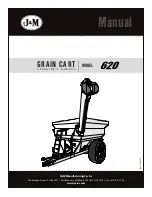
Safety guidelines relating to operating materials
Rules for handling and disposing of op-
erating materials
ENVIRONMENT NOTE
Improper use and disposal of operating and
cleaning materials can cause serious damage
to the environment.
Always use and handle the operating materi-
als in a suitable manner and follow the manu-
facturer's instructions for the product's use.
Keep the operating materials only in contain-
ers intended for this purpose and in a location
that satisfies the requirements.
The operating materials may be flammable, so
avoid contact with hot objects or open flames.
When topping up the operating materials, only
clean containers should be used.
Follow the manufacturer's safety and disposal
instructions regarding the operating and clean-
ing materials.
Do not disperse oils or other operating liquids!
Any spilt liquid must be immediately collected
and neutralised with a binding material (such
as an oil binder) and then disposed of in ac-
cordance with current regulations.
Always comply with anti-pollution regulations!
Before carrying out work that involves lubrica-
tion, filter replacement or hydraulic equipment
interventions, the area in question must be
thoroughly cleaned.
The replaced parts must always be disposed
of in accordance with the anti-pollution laws.
Oils
●
Avoid contact with skin.
●
Do not inhale oil vapours.
●
Wear appropriate personal protective equip-
ment during truck maintenance operations
(gloves, goggles etc.) to prevent the oil from
coming into contact with your skin.
ENVIRONMENT NOTE
The used oils and relative filters contain sub-
stances that are hazardous to the environment
and they must be disposed of according to
current regulations. We advise you to contact
the authorised service network.
DANGER
The penetration in the skin of hydraulic oil that has
leaked under pressure from the forklift's hydraulic
system is dangerous. If this type of lesion should
occur, contact a doctor immediately.
DANGER
Small high pressure jets of oil can penetrate the
skin. Look for any leaks using a piece of cardboard.
Battery acid
●
Do not inhale the vapour: it is poisonous.
●
Wear appropriate personal protective equip-
ment to prevent contact with the skin.
●
Battery acid is corrosive: if it should come
into contact with your skin, rinse abundantly
with water.
●
Explosive gas mixtures can form when
charging the battery; therefore, the rooms in
which the battery is charged must be in
compliance with the specific regulations on
the subject (e.g. EN 62485-3 etc.).
●
DO NOT smoke or use open flames and
lights within a 2-m radius of the charged
battery or in the battery charging area.
NOTE
For more information, consult the specific bat-
tery manual that comes with the battery.
Safety
2
Safety guidelines
16
45628043489 EN - 11/2021 - 04
Summary of Contents for ECU-30
Page 1: ...ECU30 SPECIAL Original instructions 45628043489 EN 11 2021 04 ...
Page 2: ......
Page 7: ...1 Introduction ...
Page 19: ...2 Safety ...
Page 33: ...3 Knowledge of the truck ...
Page 44: ...Knowledge of the truck 3 Truck identification 38 45628043489 EN 11 2021 04 ...
Page 45: ...4 Use and operation ...
Page 71: ...5 Maintenance ...
Page 81: ...6 Technical data ...
Page 90: ......
Page 91: ......















































